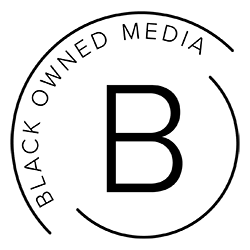
Credit: WABE
Free Our Hair: The Over-Policing of Black People’s Hair
Okay, so you’re a Black female judge, and you decide one day to change your hairstyle, to one featuring shaved sides yet uncut on top.
By E. OsborneMarch 6 2024, Published 1:00 p.m. ET
One day in 2019, you arrive at your courtroom rocking your new “do.” However, in a curious instance of role reversal, instead of the focus being on the defendant in the high-profile case, it’s on you. Throughout the day, people react by sending you emails and taking to Facebook to criticize you for your new hairstyle, using terms such as “ghetto” among others.
The object of the criticism in the scenario above was Dallas County (Texas) Judge Amber Givens-Davis, who later decried the criticisms of her hairstyle choice as overreach. As she explained in an interview with a local news outlet, “Black hair has been so politicized! My hairstyle is the way I decide to express myself. It’s absurd to think that I need to mask myself to be deemed acceptable. It’s crazy! Why in the world would I subscribe to Eurocentric beauty standards when I’m of African descent?”
Why, indeed.
The reality though, is that dress codes implemented in workplaces and in school settings across the nation effectively police Black people’s ability to exercise their free will; by banning the wearing of cornrows, dreadlocks, braids, and other hairstyles that bespeak ties to Africa. For example, in 2010, an Alabama woman’s job offer at a Mobile call center was rescinded because she refused to cut her dreadlocks. In 2017, twin sisters from a school in Massachusetts had to serve detention because of their braids; and finally in New Jersey in 2018, a White referee told a teenage wrestler that he would end up forfeiting the match, unless he cut his dreadlocks.
Mind you, such reactions to the way Blacks wear their hair are hardly new. Indeed, Whites have sought to deny Black people agency over their appearance and grooming from day one of their arrival on these shores. As Ayana Byrd and Lori Tharps point out in Hair Story: Untangling the Roots of Black Hair in America (2014: 10), one of the first things the slave traders did to their captives was to shave off their hair. Besides being a grave indignity, the involuntary shaving of the heads of the now thoroughly humiliated captives served to sever the last cultural connection to their homeland, where one’s hairstyle could signal, among other things, family background, social status, ethnic affiliation, and marital status.
Striving to meet the “standard”
Flash forward to the early 20th century, when a number of Black people began to adopt various ways to change the texture of their hair in an attempt to approximate the Eurocentric standards of beauty. Women, for their part, did this by heating a metal straightening comb on a stovetop and passing it through their hair or that of another. During my childhood in Georgia, hair-straightening rituals were a regular feature of life for females. To this day I still can smell the scent of burning hair as the hot comb made its way through tangled tresses. As I recall, the resulting straight hair came at a price. The woman or girl who was having her hair straightened had to sit perfectly still, because any sudden move or a slip of the hand by the hair straightener usually resulted in a painful burn.
Women were hardly alone in altering their hair. Men did so too, often by subjecting their hair to chemical treatments. One such treatment was called ‘The Conk’, a hairstyle popular from the 1920s to the mid-1960s. The Conk involved applying a chemical solution to the hair, which resulted in the hair having a straightened, shiny appearance. I don’t see many people with conks these days, but once upon a time it was on countless heads; particularly those of entertainers such as Little Richard, Chuck Berry, James Brown, Muddy Waters, Bo Diddley, Ike Turner, Cab Calloway, Fats Domino, Louis Jordan, and Sammy Davis, Jr.
Although processed hairstyles declined in popularity during the Black Pride movement of the 1960s, when activists, artists, and performers began sporting the Afro as a symbol of newfound pride of ancestry, the trend returned with a vengeance in the 1980s. This time it was the Jheri Curl (named after its inventor Jheri Redding), an oily, loosely curled style, and the Curly Kit, which Comer Cottrell adapted from the Jheri Curl. Like the conk of past times, these permanent wave systems soon found their way to the heads of Ice Cube, Lionel Richie, Rick James, Keenen Ivory Wayans, and countless others in the entertainment industry.
The monetary and health price being paid
As evidenced by the proliferation of businesses selling hair-care products in African-American communities, Black people on products needed to maintain various processed hairstyles and weaves. The thing is that few of these businesses tend to be owned by Blacks, so the moolah spent isn’t circulated within their communities but rather goes elsewhere. Another downside to the wearing of processed hair, is that certain elements of the chemicals used in treating the hair can be harmful. To my mind, these drawbacks are all the more reason to do away with, or at least minimize, the bans on wearing natural hairstyles in the workplace, in school settings, and in other public and private spaces.
Fortunately, a piece of legislation that would bring about such change already is in the works. It’s called the Crown Act (an acronym for Create a Respectful and Open Workplace for Natural Hair). Passed by the U.S. House of Representatives on March 18, 2022, it prohibits hair-based discrimination in the workplace, in schools, and elsewhere. To date, more than 20 states have enacted versions of the Crown Act, among them New York, Massachusetts, Virginia, California, Colorado, New Jersey, Washington, Illinois, Maryland, Texas, and Arkansas.
The day that the Crown Act becomes the law of the land will be a joyous one, particularly for African Americans, who have long been penalized for wearing hairstyles that some in the dominant society have deemed either unprofessional, unsightly, unsettling, or unconventional – or all of the above. Judge Givens-Davis recounts her own experiences: “I had been told on several occasions that I needed to ‘tame’ my hair. I didn’t correlate the word until I got into the legal profession and realized what the message really was: that if you relax your hair, you keep everybody around you relaxed.”
She continues: “When you have the freedom to express your true nature, you give strangers – people whom you’ll never meet face to face – the strength to be themselves.The faith that they, too, can refuse to play the role that society has assigned them: that they are somehow less than others. So that’s the lesson I like to teach. You never know who you’ll inspire just by being yourself.”
Indeed. Once African Americans can wear the hairstyles of their choosing – without fear of being denied employment, fired, or otherwise sanctioned – then they will be a bit closer to extricating themselves from the current state of semi-freedom, and another step closer to complete freedom. After all, freedom is absolute.

